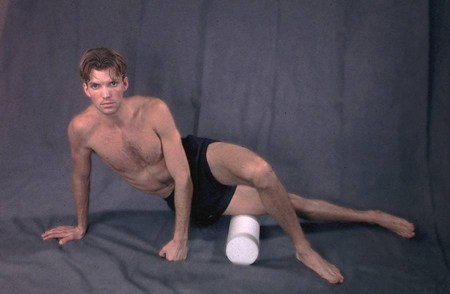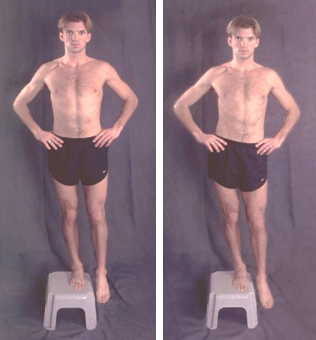Iliotibial band syndrome
- Overview
- Theory
- Diagnosis
- Management
- Follow up
- Resources
Treatment algorithm
Please note that formulations/routes and doses may differ between drug names and brands, drug formularies, or locations. Treatment recommendations are specific to patient groups: see disclaimer
pain and inflammation
nonsteroidal anti-inflammatory drugs (NSAIDs)
The goal of the initial treatment is to reduce local inflammation and provide effective pain relief using NSAIDs.
Primary options
diclofenac potassium: 50 mg orally (immediate-release) three times daily when required
OR
ibuprofen: 400-600 mg orally every 4-6 hours when required, maximum 2400 mg/day
activity modification
Treatment recommended for ALL patients in selected patient group
The aggravating activity must be avoided in the acute phase. It can be replaced with alternative activity, such as swimming using arms only.[7]Fredericson M, Weir A. Practical management of iliotibial band friction syndrome in runners. Clin J Sport Med. 2006 May;16(3):261-8. http://www.ncbi.nlm.nih.gov/pubmed/16778549?tool=bestpractice.com
Ice is also used on the affected area.
combination local anesthetic and corticosteroid injection
Treatment recommended for ALL patients in selected patient group
Combination local anesthetic and corticosteroid injection are used if patient's pain and swelling persists after analgesic/anti-inflammatory treatment.[37]Gunter P, Schwellnus MP. Local corticosteroid injection in iliotibial band friction syndrome in runners: a randomised controlled trial. Br J Sports Med. 2004 Jun;38(3):269-72. https://www.ncbi.nlm.nih.gov/pmc/articles/PMC1724827 http://www.ncbi.nlm.nih.gov/pubmed/15155424?tool=bestpractice.com
Inject in the area where the iliotibial band crosses the lateral femoral condyle.
Corticosteroid injections are recommended in the acute phase for patients with severe pain or swelling and as a means to progress the rehabilitation.[Figure caption and citation for the preceding image starts]: Injection site for iliotibial bandFrom the personal collection of Dr J.C. Mak [Citation ends].
Primary options
methylprednisolone acetate: 40 mg by injection as a single dose
and
lidocaine: 10 mg by injection as a single dose
resolved pain and inflammation
stretching exercises
Stretching exercises are given for early return to activity following resolution of pain and inflammation.
The patient stands and stretches the iliotibial band, with an overhead arm extension. A more transverse plane stretch is made by bending downward and diagonally, while reaching out and extending the arms with clasped hands.[Figure caption and citation for the preceding image starts]: Standing stretch exerciseFrom the personal collection of Dr J.C. Mak [Citation ends].
foam roll mobilization
Treatment recommended for ALL patients in selected patient group
Foam roll mobilization is used to improve myofascial restrictions along the lateral hip and thigh. While supporting the upper body with the hands on the floor, the patient reclines on a 3 to 6 inch foam roll placed under the side of the involved leg, which is held straight. The patient crosses the uninvolved leg over the involved leg and rolls along the outer thigh from the bottom of the hip bone to just above the knee, emphasizing tight or tender areas.[38]Fredericson M, Guillet M, Debenedictis L. Innovative solutions for iliotibial band syndrome. Phys Sportsmed. 2000 Feb;28(2):53-68.
http://www.ncbi.nlm.nih.gov/pubmed/20086621?tool=bestpractice.com
[Figure caption and citation for the preceding image starts]: Foam roll exerciseFrom the personal collection of Dr J.C. Mak [Citation ends].
hip abductor strengthening
Treatment recommended for ALL patients in selected patient group
Once range-of-motion and myofascial restrictions have been resolved with stretching exercises and foam roll mobilization, recovery and strengthening can be started.[27]Fredericson M, Cookingham CL, Chaudhari AM, et al. Hip abductor weakness in distance runners with iliotibial band syndrome. Clin J Sport Med. 2000 Jul;10(3):169-75. http://www.ncbi.nlm.nih.gov/pubmed/10959926?tool=bestpractice.com [28]Fredericson M, Wolf C. Iliotibial band syndrome in runners: innovations in treatment. Sports Med. 2005;35(5):451-9. http://www.ncbi.nlm.nih.gov/pubmed/15896092?tool=bestpractice.com These involve open-chain, side-lying leg lifts, closed-chain, single-leg balance step-downs, pelvic drop exercises, eccentric muscle contractions, triplanar motions, and integrated movement patterns. Examples of 3 of these exercises are the modified matrix, wallbanger, and frontal plane lunge. For all exercises, it is advisable to start with 5 to 8 repetitions and gradually build up to 2 to 3 sets of 15 repetitions and repeat the exercise in both legs, even if only 1 side is symptomatic.
Electromyography studies suggest that contractions above 60% of the maximal voluntary isometric contraction are needed for strengthening.[39]Distefano LJ, Blackburn JT, Marshall SW, et al. Gluteal muscle activation during common therapeutic exercises. J Orthop Sports Phys Ther. 2009 Jul;39(7):532-40.
http://www.ncbi.nlm.nih.gov/pubmed/19574661?tool=bestpractice.com
[40]Ayotte NW, Stetts DM, Keenan G, et al. Electromyographical analysis of selected lower extremity muscles during 5 unilateral weight-bearing exercises. J Orthop Sports Phys Ther. 2007 Feb;37(2):48-55.
http://www.ncbi.nlm.nih.gov/pubmed/17366959?tool=bestpractice.com
This intensity is achieved with progression into single leg squat exercises and use of resistance (e.g., 5 lb [2.3 kg] ankle weight with side-lying hip abduction).[39]Distefano LJ, Blackburn JT, Marshall SW, et al. Gluteal muscle activation during common therapeutic exercises. J Orthop Sports Phys Ther. 2009 Jul;39(7):532-40.
http://www.ncbi.nlm.nih.gov/pubmed/19574661?tool=bestpractice.com
[Figure caption and citation for the preceding image starts]: Demonstration of pelvic dropFrom the personal collection of Dr J.C. Mak [Citation ends].
refractory to conservative treatment
elective surgery
Occasionally, surgery may be required to decrease impingement of the iliotibial band (ITB) on the lateral femoral epicondyle.[7]Fredericson M, Weir A. Practical management of iliotibial band friction syndrome in runners. Clin J Sport Med. 2006 May;16(3):261-8. http://www.ncbi.nlm.nih.gov/pubmed/16778549?tool=bestpractice.com The surgery involves resection, when the leg is in a 30° flexed position, of a triangular piece of the ITB from the area overlying the lateral epicondyle. Alternatively, the ITB can be Z-lengthened.

Choose a patient group to see our recommendations
Please note that formulations/routes and doses may differ between drug names and brands, drug formularies, or locations. Treatment recommendations are specific to patient groups. See disclaimer
Use of this content is subject to our disclaimer